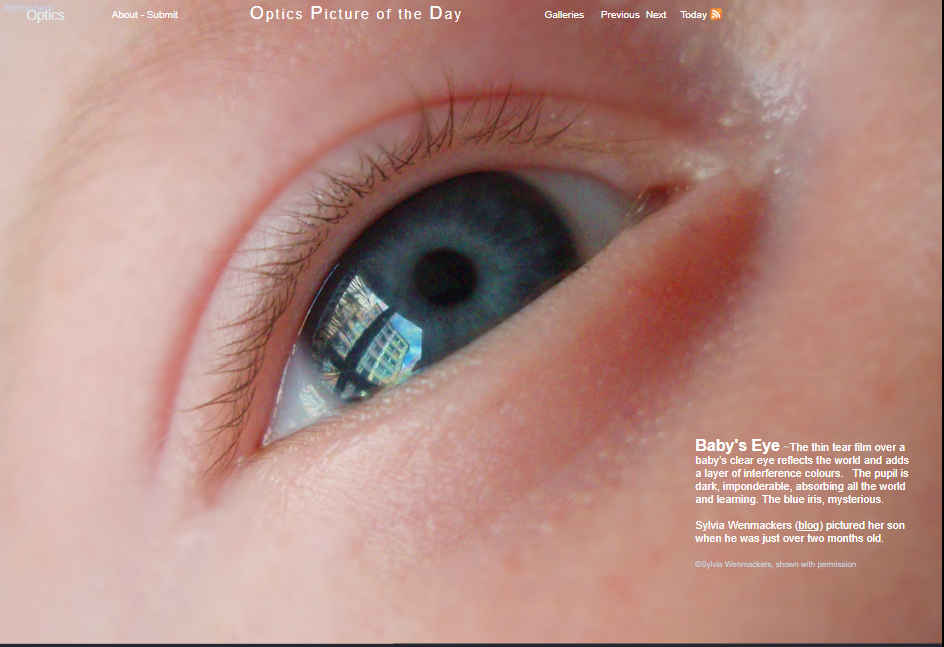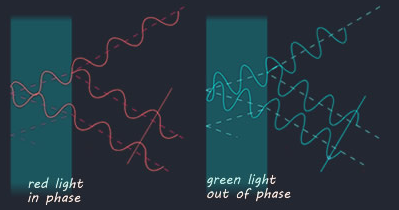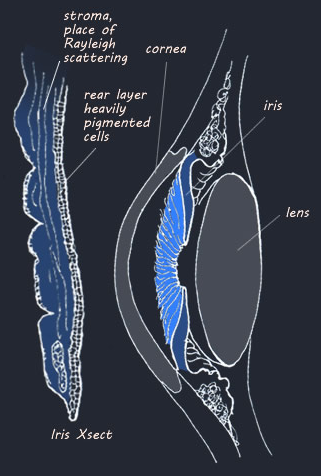Why are baby eyes blue? - OPOD
Why Are Baby Eyes Blue? - A Fascinating Look at the Science Behind Eye Color
Have you ever wondered why most babies have mesmerizing blue eyes? The answer lies in the intricate workings of the eye and the phenomenon of interference colors. In this article, we will delve into the science behind baby eye color and explore the fascinating reasons behind their captivating blue hues.
When we look into a baby's eyes, we are drawn to the thin tear film that covers their clear eyes. This film acts as a reflective surface, adding a layer of interference colors that give their eyes an ethereal quality. The pupil, dark and imponderable, absorbs the world around them, while the blue iris remains mysterious and captivating.
The outer surfaces of the cornea and the tear film wetting it create a mesmerizing display of interference colors. These colors are similar to the vibrant hues seen in soap bubbles or oil films. The reflection of light waves from these surfaces combines, resulting in reinforcement or weakening of the reflection depending on the phase of the waves. As a result, iridescent colors continuously change and shift, creating a captivating visual experience.
The iris, situated between the cornea and the lens, is a flexible and responsive curtain that regulates the intensity of light entering the eye. While baby irises are predominantly blue, their adult eye color has yet to be determined. The reason behind this initial blue hue lies in the absence of pigment in the main body of the iris, known as the stroma. Instead, the blue color is produced through a phenomenon called Rayleigh scattering, which occurs when particles smaller than the wavelengths of visible light scatter light in a specific way. This is the same reason why the sky appears blue.
As babies grow and develop, melanins start to develop in both the stroma and the front layer of the iris. Melanins are pigments that also color hair and skin. The combination of these melanins, along with the blue-rich Rayleigh scattering, gives rise to the range of eye colors observed in adults. Browns, greens, and grays all arise from different concentrations of brownish melanins and scattering from tiny stroma particles and structures.
It is important to note that the color of a baby's eyes at birth does not necessarily determine their eye color in adulthood. Eye color can change during the first few years of life as melanin production increases and the eye continues to develop. The final eye color is influenced by complex genetic factors that determine the amount and distribution of melanin in the iris.
In conclusion, the captivating blue color of baby eyes can be attributed to the absence of pigment in the stroma of the iris and the phenomenon of Rayleigh scattering. As babies grow and melanins develop, their eye color may change, influenced by genetic factors. The science behind eye color is a fascinating field that continues to intrigue scientists and parents alike. So next time you gaze into a baby's eyes, remember the intricate processes that contribute to their enchanting blue hues.

Baby's Eye ~The thin tear film over a baby’s clear eye reflects the world and adds a layer of interference colours. The pupil is dark, imponderable, absorbing all the world and learning. The blue iris, mysterious.
Sylvia Wenmackers (blog) pictured her son when he was just over two months old.
©Sylvia Wenmackers, shown with permission

Interference Colours
The outer surfaces of the cornea and the thin tear film wetting it reflect the distant building and sky.
Interference colours are superimposed. They arise in the same way as the colours of soap bubbles or oil films.

Light waves reflected from the two surfaces combine. When the waves are in phase they reinforce. When out of phase the reflection is weakened or even eliminated.
The in-phase and out of phase conditions depend on film thickness, the wavelength (colour) and the viewing angle.
The result is iridescent colours changing and shifting from moment to moment.

The iris sits in the eye’s front chamber between the world facing cornea and the brain facing lens. A wonderfully flexible and responsive curtain. Effortlessly opening and closing, regulating the intensity of light to the retina.
Why blue?
Nearly all baby irises are blue and we wait to see what adult colours will come.
It is the colour of the sky and for good reason.
The iris must block light and this is mostly done by a double layer of cells on its lens facing rear surface. They are heavily pigmented almost black by varieties of melanin, the same pigment that colours hair and skin. They are so dark that they hardly contribute to iris colour.
In a baby, the main iris body, the stroma, lacks pigment. The blue is produced there, like that of the sky, by Rayleigh scattering of particles smaller than the wavelengths of visible light. With age, melanins develop in the stroma too and in the front layer. These, combined with the blue rich Rayleigh scattering give the range of human eye colours.
Browns, greens, grey all arise from different concentrations of basically brownish melanins and Rayleigh (perhaps sometimes also Mie) scattering from tiny stroma particles and structures.




Note: this article has been automatically converted from the old site and may not appear as intended. You can find the original article here.
Reference Atmospheric Optics
If you use any of the definitions, information, or data presented on Atmospheric Optics, please copy the link or reference below to properly credit us as the reference source. Thank you!
-
<a href="https://atoptics.co.uk/blog/why-are-baby-eyes-blue-opod/">Why are baby eyes blue? - OPOD</a>
-
"Why are baby eyes blue? - OPOD". Atmospheric Optics. Accessed on November 26, 2024. https://atoptics.co.uk/blog/why-are-baby-eyes-blue-opod/.
-
"Why are baby eyes blue? - OPOD". Atmospheric Optics, https://atoptics.co.uk/blog/why-are-baby-eyes-blue-opod/. Accessed 26 November, 2024
-
Why are baby eyes blue? - OPOD. Atmospheric Optics. Retrieved from https://atoptics.co.uk/blog/why-are-baby-eyes-blue-opod/.